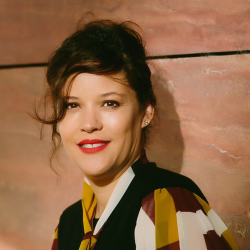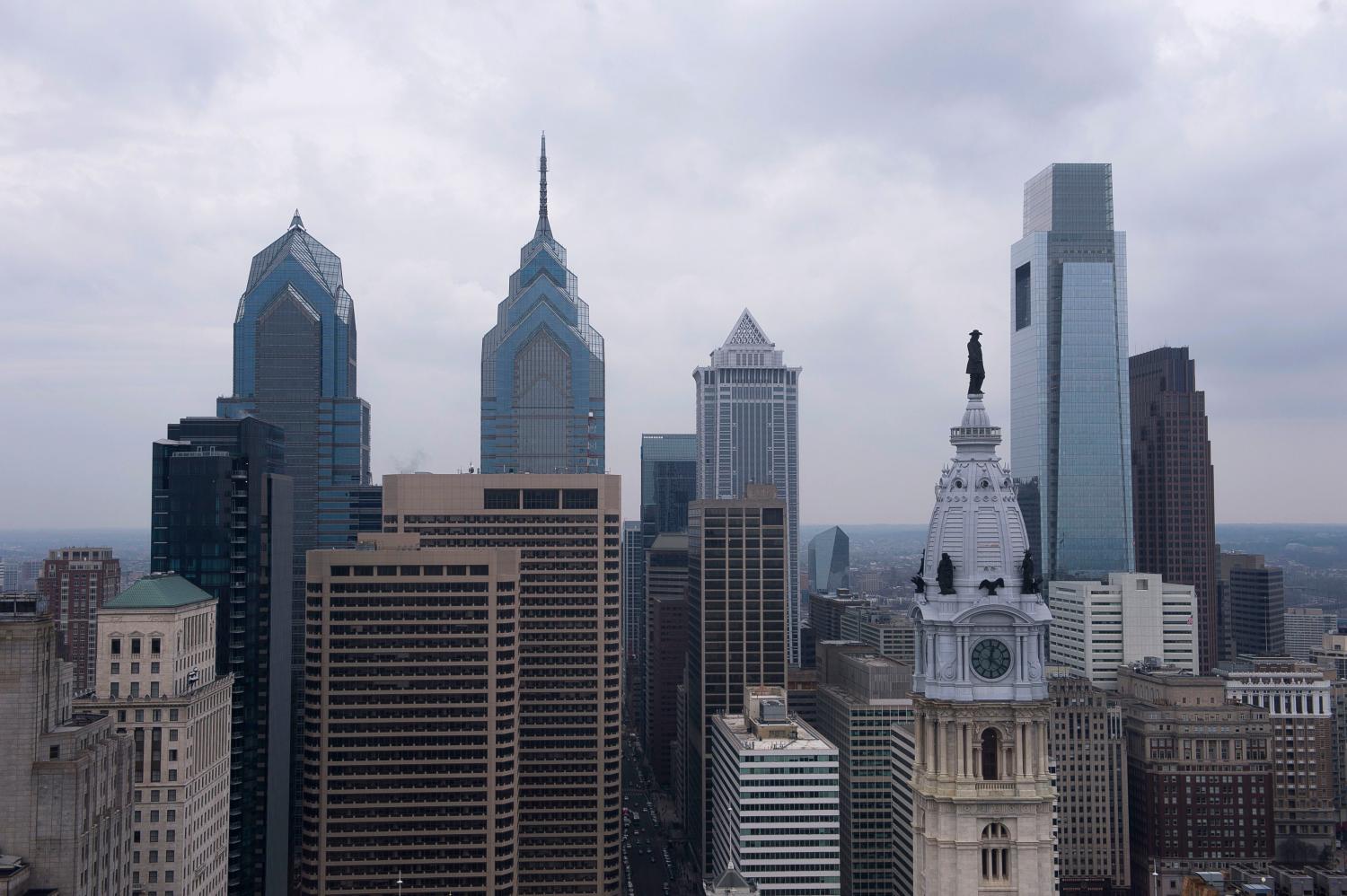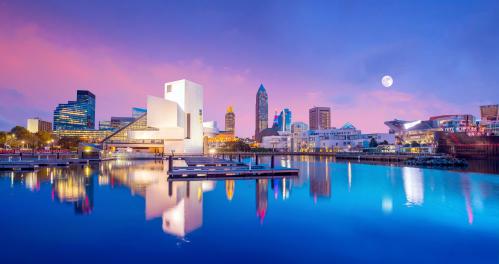In the year since we released “The Rise of Innovation Districts: A New Geography of Innovation in America,” Brookings has visited or interacted with dozens of leaders in burgeoning innovation districts in the United States and Europe. In so doing, we’ve sharpened our knowledge of what’s happening on the ground and gained some important insights into how cities and metros are embracing this new paradigm of economy-shaping, place-making, and network-building.
Innovation districts capture the remarkable spatial pattern underway in the innovation economy—the heightened clustering of anchor institutions, companies, and start-ups in small geographic areas of central cities across the United States, Europe, and other global-trading regions.
The rise of innovation districts has been situated against the familiar backdrop of suburban corporate campuses and science parks. Accessible only by car, these spatially isolated corridors place little emphasis on the quality of life or on integrating work, housing, and recreation.
By contrast, in our report we found the rise of urban innovation hubs to be the organic result of profound economic and demographic forces that are altering how we live and work. The growing application of “open innovation”—where companies work with other firms, inventors, and researchers to generate new ideas and bring them to market—has revalued proximity, density, and other attributes of cities. At the same time, the growing preference of young talented workers to congregate in vibrant neighborhoods that offer choices in housing, transportation, and amenities has made urban and urbanizing areas increasingly attractive.
We also found that innovation districts uniformly contain a mix of economic, physical, and networking assets. Economic assets are the firms, institutions, and organizations that drive, cultivate, or support an innovation-rich environment. Physical assets are the public and privately owned spaces—buildings, open spaces, streets, and other infrastructure—designed and organized to stimulate new and higher levels of connectivity, collaboration, and innovation. Lastly, networking assets are the relationships between actors—such as between individuals, firms, and institutions—that have the potential to generate, sharpen, and/or accelerate the advancement of ideas. These assets, taken together, create an innovation ecosystem—the synergistic relationship between people, firms, and place that facilitates idea generation and advances commercialization.
One year later, innovation districts continue to rise. What have we learned about how they are evolving?
First, the model of innovation districts has been embraced, co-opted, and (in some cases) misappropriated, further reinforcing the need for grounding this work in empirically based evidence.
A simple Google search will reveal the extent to which the language of “innovation districts” (or “innovation quarters,“ “innovation neighborhoods,” or “innovation corridors”) has rapidly permeated the field of urban and metropolitan economic development and place-making.
In some places, this labeling is being accurately used by globally recognized research institutions (e.g., Carnegie Mellon in Pittsburgh, Drexel University in Philadelphia) that are both experiencing extraordinary growth near their campuses as well as designing intentional efforts to build on their distinctive assets. In communities as diverse as Philadelphia, Pittsburgh, and St. Louis in the United States and Manchester and Sheffield in England, local leaders are conducting deep empirical analysis to understand their competitive advantages and existing weaknesses within their innovation ecosystem. They are exploring what it means to encourage greater collaboration and cooperation across their institutions, firms, and entrepreneurs. And they are exploring ways to better create “place” so as to increase overall vitality, facilitate innovation, and spur the growth of new businesses and jobs.
In other places, the nomenclature reflects an aspiration—and is spurring more deliberate efforts by local stakeholders to grow distinctive innovation ecosystems. In cities like Albuquerque, N.M., Chattanooga, Tenn., Chicago, Ill., Durham, N.C., and San Diego, Calif., local leaders are using the innovation district paradigm as a platform to measure their current conditions, develop strategies for addressing gaps and challenges, and build coalitions of stakeholders that can together help realize a unified vision for innovative growth. Some of these budding districts represent typologies not outlined in our report but that are ripe for future research, including “start-up” enclaves in or near downtowns of cities that lack a major anchor as well as “public markets” that blend locally produced food products and crafts with maker spaces, digital design, and other innovations in the creative arts.
There is one unfortunate trend in the rising use of the “innovation district” lexicon. In a number of cities, local stakeholders have applied the label to a project or area that lacks the minimum threshold of innovation-oriented firms, start-ups, institutions, or clusters needed to create an innovation ecosystem. This appears to result either from the chase to jump on the latest economic development bandwagon, the desire to drive up demand and real estate prices, or sometimes a true lack of understanding of what an innovation district actually is. The motivation for real estate developers to adopt the moniker seems clear: to achieve a price premium for their commercial, residential, and retail rents. Yet these sites are typically a collection of service-sector activities with little focus on the innovation economy. The lesson: labeling something innovative does not make it so.
From all these observations, it is clear that the field needs a routinized way to measure the starting assets of innovation districts—both to separate true districts from “in name only” ones as well as to give individual communities a platform for developing targeted strategies going forward. This means both running the numbers—conducting a quantitative audit—and undertaking a more qualitative assessment of strengths and weaknesses. Irrespective of their phase of development, innovation districts must evaluate the extent to which they have a critical mass of economic, physical, and networking assets to collectively generate the vitality that these districts demand. They need to evaluate the competitive advantages they have in certain economic sectors and learn how to cultivate them. And they need to ensure that they have the connectivity, diversity, and quality of place necessary to create a unique and vibrant environment in which innovation can thrive.
To facilitate this process, we are working in close collaboration with Mass Economics and the Project for Public Spaces to develop an audit template and tool. Over the next year, we intend to sharpen this tool in a subset of innovation districts across the country and then encourage others to employ it in their own established or burgeoning districts.
Second, the core economic assets of innovation districts are not fixed; in fact,
many innovation districts are being created or enhanced by the relocation of major anchor facilities as institutions strive to achieve the highest return on investment.
The conventional notion of an “anchor” institution is that it is solidly weighted in a particular place. Yet over the past decade a substantial number of innovative companies and advanced educational and research institutions have moved key facilities and units as a means of generating greater innovation output. Examples of new locations include the University of California-San Francisco’s biotechnology campus in Mission Bay (2003); the University of Washington’s medical research hub in Seattle’s South Lake Union (2005); Brown University’s medical school in downtown Providence, R.I. (2011); Duke’s Clinical Research Institute in downtown Durham (2013); Carnegie Mellon University’s Integrative Media Program in the Brooklyn Navy Yard (2013); and, most famously, the new Cornell Tech campus on Roosevelt Island in New York City (2015).
These “first mover” relocations show how corporate and university leaders are departing from the tradition of building new facilities within their existing footprint and are willing to seek out new areas (and even new cities) to retain, or achieve, competitive advantage in their respective clusters and fields. As Cornell Professor Ronald Ehrenberg said about his school’s isolated Ithaca, N.Y. campus, “It is very, very difficult for us to do the kind of development through tech transfer that a place like Stanford or Berkeley can do in San Francisco or Harvard or MIT can do in Boston.” Our strong sense in talking with leaders around the country is that we are still at the early stage of corporate and university relocations given the extent to which urban areas have been revalued. The physical relocation of key innovation assets has now become a critical competitiveness strategy for companies, universities, and even states.
In some cases, the “unanchoring of anchors” is also compelling local leaders to rethink the traditional borders and boundaries of the innovation economy. In Philadelphia, for example, University City has always been recognized as a settled innovation hub, given the co-location of such anchor institutions as Drexel University, the University of Pennsylvania, the University City Science Center, and others. The recent decision of Comcast to consolidate its corporate presence in the downtown area and build its major new Innovation and Technology Center less than 10 blocks from 30th Street Station and the Drexel Campus is convincing some leaders to “stretch” Philadelphia’s University City district to incorporate this new corporate giant.
Third, almost all innovation districts have significant work ahead to understand the rising value of “place” in the innovation ecosystem and leverage or reconfigure their physical assets to create dense and dynamic communities.
While our paper dissected various types of physical assets to help practitioners understand their individual roles and value, the more important message to convey now is the imperative to combine and activate physical assets in ways that create vibrant “places.” The Project for Public Spaces aptly describes place as “…environments in which people have invested meaning over time. A place has its own history—a unique cultural and social identity that is defined by the way it is used and the people who use it.”1
Our review of innovation districts, including those cited in our paper, reveals that many have not yet maximized the potential for creating lively communities in which their residents and workers feel invested, reducing the potential innovation output of these communities. When designed and programmed well, a district’s public spaces—whether within buildings or outside of them—facilitate open innovation by offering numerous opportunities to meet, network, and brainstorm. Strong places entice residents and workers to remain in the area off hours, extending the opportunities for collaboration. Strong places create a culturally and educationally enriched environment that strengthens human interaction, knowledge, and motivation.
While some university-led districts have made some improvements over the years, districts anchored by medical campuses have significant work ahead. These spaces were designed as isolated fortresses that valued parking over walking (ironic given their health mission), with little or no attention paid to amenities, cultural activities, retail, or housing. Significantly, some medical campuses are often located in close proximity to downtowns, as part of universities, or near organic entrepreneurial communities (e.g., the proximity of Oklahoma City’s Health District to Automobile Alley). This raises the potential for smart (and related) place-making activities in a nearby area and reinforces the need to rethink traditional geographies and artificial boundaries when considering interventions.
Fourth, the rapid growth and impact of national intermediaries (what we call innovation cultivators) shows real promise in helping innovation districts grow and steward their networking assets and stimulating new innovation opportunities.
The past year has seen substantial growth in multicity intermediaries along with scores of locally grown accelerators and incubators. It appears more than ever that intermediaries are increasingly the catalyst to growing innovation and entrepreneurial energy within local districts and across start-ups, small and medium-sized enterprises, and, even to some extent, large companies and research institutions. They are designed to think and act horizontally, encouraging people and firms to interact and work together in ways and at a scale previously unseen.
A growing and increasingly important role for intermediaries is helping innovation districts evolve from the traditional “research and development” model to a “search and development” one, where crucial answers to their innovation questions and technological challenges are discovered by finding and collaborating with other firms. Some districts immediately recognized this potential and have gone to great lengths to grow, lure, and fund the development of multiple intermediaries across their districts.
The Cortex Innovation Community in St. Louis has, in a short period, clustered new buildings owned and/or supported by a number of well-respected intermediaries. These development and programmatic moves are effectively creating a new focal point for Cortex innovation activities. The new Cambridge Innovation Center, which offers space for start-ups combined with access to venture capital firms, professional services, and a plug-and-play physical environment, is already at 85 percent occupancy. A newly constructed Tech Shop—a do-it-yourself “maker space” equipped with industrial tools, machinery, and technology to support entrepreneurs—is under construction nearby. The near complete renovation of the Center for Emerging Technologies, which provides training, specialized facilities, and technical support, adds yet another layer of support for entrepreneurs and start-ups. Adding more to this mix is a soon-to-be-constructed space for tech-commercial activities combined with new housing, which will exponentially increase the number of people in a very small radius.2
As one can imagine, this clustering was deeply intentional and viewed as a way to stimulate new relationships, new networks, and the cross-fertilization of ideas; Cortex refers to this deliberate process as “innovation engineering.” We anticipate more innovation districts to follow suit, pursuing, if not cultivating, such intermediaries in their own innovation ecosystems.
Finally, the rise of innovation districts takes place in a national and urban political environment that demands inclusive growth and equitable outcomes.
The past year has seen the elevation of income inequality and social mobility as issues of national and urban significance. With the federal government mired in partisan gridlock, cities have become the vanguard of efforts to raise the minimum wage, expand affordable housing, and extend pre-K education, among other initiatives. These efforts come at a time when the civil unrest in Baltimore and Ferguson has refocused national attention on neighborhoods of high poverty.
Because of their location in the cores of central cities, many established and emerging innovation districts are located several blocks away from distressed communities. This proximity creates an enormous opportunity to show the positive impact that innovative growth can have on inclusive outcomes. Innovation districts create employment opportunities that can be filled by local residents and procurement and construction opportunities that can be fulfilled by local vendors and contractors. The districts generate tax revenues that can be used to fund neighborhood services and neighborhood regeneration. And they offer the potential to link the ample expertise and talent in anchor educational institutions with the needs of neighborhood schools and children.
Recognizing these benefits, local leaders are demonstrating a genuine commitment to growing more inclusive districts. In our work, we’ve seen several early models that could be built on and replicated. In the Barcelona 22@ district, for example, leaders are trying to quantify the growth in service jobs accessible to local and regional residents while, at the same time, connecting those residents to training that increases their skills in more innovation-oriented sectors. Last year, Drexel University opened a new “urban extension center” that offers career-building workshops, legal clinics, and other services to residents of the adjacent Mantua Promise Zone. The Evergreen Cooperative in Cleveland’s University Circle district has been working for several years to leverage local purchasing power to create business ownership and employment opportunities for low-income residents. And in Baltimore, the University of Maryland partnered with surrounding neighborhood organizations, residents, and institutions to develop a detailed new plan for building what the Baltimore Southwest Partnership envisions as a “diverse, cohesive community of choice built on mutual respect and shared responsibility.”
These examples represent concrete initiatives to ensure that nearby neighborhoods and their residents connect to and benefit from new growth opportunities in innovation districts and beyond. Scaling such efforts will be critical in the years to come, as the success of these districts will be defined in large part by their broader city and regional impacts.
As Brookings works this year to help unleash more innovation districts across the U.S. and Europe, we will continue to hone our observations and knowledge about trends, challenges, and strategies. We will compile and publish what we have learned for anchor leaders, policymakers, scholars, and practitioners, focusing on many of the issues—accelerating commercialization to improving inclusion—noted above. We will do this work in close collaboration with proven organizations like Mass Economics and Project for Public Spaces. We look forward to contributing to this rapidly changing space via empirical and on-the-ground research, strategy and policy development, convenings, and network building. Stay tuned.
Read The Rise of Innovation Districts: A New Geography of Innovation in America
1. Project for Public Spaces, “Placemaking and Place-Led Development: A New Paradigm for Cities of the Future, available at http://www.pps.org/reference/placemaking-and-place-led-development-a-new-paradigm-for-cities-of-the-future/ (June 15, 2015).
2. Email exchange with Dennis Lower, President and CEO, Cortex Innovation Community, May 8, 2015.
The Brookings Institution is committed to quality, independence, and impact.
We are supported by a diverse array of funders. In line with our values and policies, each Brookings publication represents the sole views of its author(s).












